#backpacking food
Text

Getting ready for three days of solo backpacking and fishing
#backpacking food#an extremely healthy hobby#why all that sour fruity candy with no chamoy and tajin? Because I don't need sticky ass hands in the forest duh#wilderness backpacking
3 notes
·
View notes
Text

First gear spread and weigh in for PCT going southbound starting 24 of June 👹
Goal was to stay under 15lbs as a first long trail thru hiker and all this junk is at 11.5 minus the worn weight (trekking poles bc I use them a lot and spikes bc I’ll only be using short term and ditching at the post office)
#pacific northwest#pacific crest trail#pacific coast#california#hiking#nature hikes#backpacking#ultralight backpacking gear#backpack#backpacking food#backpacking gear#ultralight gear#pct#thru hiking#diary entry#diary#online diary
6 notes
·
View notes
Text
A COOL PERSPECTIVE
I am about to set out on a backpacking trip. Over the years I have encountered hikers who cold soak their meals eliminating the need for carrying a stove or fuel. I am not sure I am ready to take the 'plunge' but Heather Daya Rideout has some good perspectives and even some great strategies for exploring this method. HS
Cold-Soak No-Cook Backpacking Meals
Heather Daya Rideout May 3, 2022 Frequently Asked Questions, UL-Backpacking

The terms “cold-soak” and “no-cook” have become popular lingo amongst backpackers who opt for another way to eat on-trail without using a stove. Cold-soaking is a no-cook method where you simply soak dry food with water to prepare a meal. Sounds easy, right? For the most part, it is – but if you’re new to the cold-soak world and want to give it a try, there are a few tricks of the trade to make your experience more worthwhile and some points to consider to see if it’s right for you before you ditch your stove for good.
The Basics: How to Cold-Soak
This is the basic, four-step process to stoveless cooking (aka “cold-soak” or “no-cook”). I’ll include more details to elaborate on these four steps to come.
Get a jar that seals and doesn’t leak.
Pour filtered water over the food.
Be aware of the timing – make sure the meal has enough time to “cook.”
Stir and eat it when ready.
Benefits of Cold-Soaking Backpacking Food
So what’s the hype with cold-soaking? I did some research on cold-soaking before I started my Pacific Crest Trail (PCT) hike. I had been super content carrying a stove on my Appalachian Trail (AT) thru-hike, yet this cold-soaking technique had become all the rage since then, so I thought it was worth a look. I decided to do both – carry my trusty stove, pot, and a small Talenti Gelato jar that was only 1.9 ounces. Sure, many ultralight hikers would laugh at me because they had opted to ditch the stove and fuel to save weight, and here I had both in my pack, but I wasn’t sold on cold-soaking just yet.
Through my experimentation and the feedback of other cold-soak junkies, here are the key benefits of Cold-Soaking Backpacking Meals.
Lighten the Load
Some hikers believe it’s less weight to carry when you don’t have a stove or fuel to lug around in your backpack. However, you do have to carry the weight of that water mixed with your food in the container, so it may only save a bit of weight since stoves can be quite light. In terms of space, it definitely feels less bulky to me on subsequent trips when I’ve just carried my Talenti jar and that’s it.
Less Worry
It’s difficult to figure out how much stove fuel you need to carry on a trip, which urges one to lean on the side of caution and carry more. With cold-soaking, you leave that fuel-guessing game behind and don’t have to haul bulky gas canisters.
Cost-Efficient
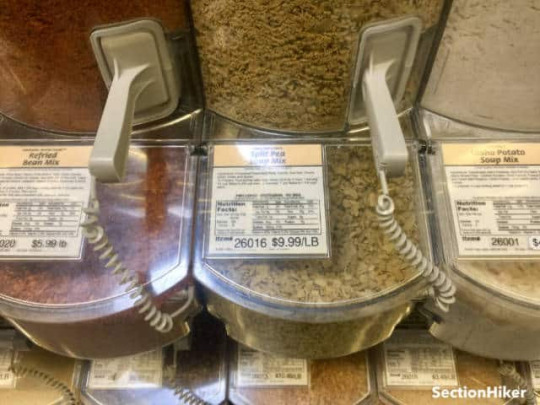
No-Fuss
After a long day of hiking when energy is lacking, sometimes it can feel like a drag to pull out the stove, cook, eat, and then clean up. The same goes with mornings if you just want to get out of your tent and start hiking right away. With cold-soaking, you can walk while your food rehydrates and then stop to eat it whenever you wish.
I really liked doing this when I wanted to hike very early in the dessert section of the PCT to avoid the heat; I would cold-soak my oats and eat them when I wanted a break after an hour or so of walking. On days I was putting in a lot of miles, I chose to cold-soak and carry my food which was ready to eat when I got to camp at night without doing anything extra. This also worked well for me if I wanted to hike at night. I would cold-soak my food around dusk, hike while it did its cooking thing on my back, break to eat, and then keep going without the big production of having to bust out my stove, wait for the water to boil, cook, etc. When efficiency and time are factors, cold-soaking is awesome.
Easy Clean-Up
All you have to do is add some filtered water to your jar after eating, shake, and then drink to clean up easily. I personally like to wipe out any last bits with a little toilet paper that I then pack out, to make sure it’s dry and I’m not sealing up a wet jar; this is especially important in a hot climate where it can get funky. It’s a bit questionable as to how sanitary you can really get that container, especially if it has little grooves in it at the base. On the flip side, when you boil water in your pot, you help to disinfect and sterilize it, which is worth mentioning.
A Rain-Friendly Method
It’s never fun to cook on your stove outside when it’s raining and it’s definitely not advisable to ever use a stove in your tent. Some hikers cook under the tent’s vestibule, but honestly, doing that always freaks me out as I imagine my tent going up in flames should an accident occur. With cold-soaking, you don’t have to worry about getting wet or going hungry if you need to eat in your tent during a storm.
Fire Ban Areas
There are trails you may hike where fire bans are in effect because of wildfire risk and you can’t use a stove. Knowing how to cold-soak doesn’t limit where you can go and ensures you’re respectful of the rules of where you’re backpacking.
Less Smell to Attract Bears

Downsides to Cold-Soaking Backpacking Food
There are always two sides to a coin, and that’s no different with cold-soaking as a cooking method. Although I grew quite fond of cold-soaking at times, I still like carrying a stove. Here are some reasons why, and when, you may not wish to cold-soak your food.
No Hot Meals or Drinks
This reason is pretty obvious: no stove means no heat, which means nothing hot to consume. I find that in some conditions, having a warm meal can be soothing and comforting. Not only is this ideal in cold weather, but also for the ritualistic aspect of pausing to break and eat, without rush or hurry. To be transparent, I really don’t like crushing big miles, but I do it when I have a goal and need to hike hard to attain it. I prefer creating time and spaciousness on my trips to enjoy my food and nourish myself well, both nutritionally and emotionally. Cold-soaking can be more of an ‘eat and get it done’ experience which isn’t always what I’m going for when I backpack.
With that said, there were times I didn’t feel as satisfied when I ate cold-soaked meals, and that I was just eating for the sake of it. Sometimes this came in handy, but it wouldn’t be my forever choice. This is worth giving some consideration to. What is your style of eating? Do you like to take time to eat or it doesn’t really matter to you as long as you’re fed? There’s no right or wrong way – you just have to know your way.
Food Choices May Be Limited
I conjured up plenty of cold-soak meal options while on-trail, and complimented it with other stoveless food choices, so there were days I never needed to whip out my stove. There are many possibilities out there with cold-soaking backpacking food, yet you may find some choices are limited. Most packaged backpacking meals cannot be cold-soaked, which includes brands like Mountain House. These meals often contain pasta and rice which really needs to become heated to be edible.
However, I do know hikers who cold-soak Knorr Rice Sides and Mac & Cheese with relative success; these dishes just need to be soaked for several hours before ready to consume. Note that quinoa and instant rice don’t work with cold-soaking. There are some packaged backpacking meals that do work with cold-soaking, but it’s just not a guarantee and requires some experimenting or research.
And if you’re like me, I can’t stand cold coffee, so I don’t even bother without a stove, although other hikers love it. You do you.
Weather Considerations
I mentioned that hot food from a stove and pot can be comforting, and it also can be warming in cold weather conditions. I get cold very easily so I need to think about how a stove benefits me not only for sustenance but in case I need to warm my hands and body temperature. Drinking warm beverages also can ward off hypothermia.
If you chill easily or do a lot of cold weather trips, you may not love cold-soaking. However, in hot, desert conditions and in summer, I’m not as excited about warm meals. I actually prefer the consistency of my cold-soaked oats with all my mix-ins than when I cook them. If you backpack in hot climates often, cold-soaking may be a dream come true.
A Stove is Back-Up Water Purifier

Cold-Soaking Tips and Tricks
Here are some more tips and tricks for cold-soaking meals, so you can eat with success and pleasure.
Choosing a Cold-Soak Jar/Container
When choosing a cold-soaking vessel, look at these specifics.
The container needs to be leakproof and seal tightly.
It should be large enough and wide enough – if you’re going to have a lot of food inside, a small container won’t work for you.
Not too tall – your spoon or spork has to be able to reach the bottom and it’s tough to clean if too tall.
The container I’ve used with success seems to be one of the most commonly used on trial, the Talenti Gelato 473 ml jar that holds 16 ounces in volume and weighs 1.9 ounces. There were times I wished it was bigger, and this past summer I discovered the next size up – Talenti’s large 950 ml, 32-ounce jar that doesn’t weigh much more. Yes, it takes up more space, but no different than if you had a pot.
Hikers also like using peanut butter jars that seal well, which are also lightweight, and usually come in at around 750 ml. and 25 ounces for volume. Peanut butter jars can be taller though and a bit narrow; I like to be sure it’s wide enough so it’s user-friendly to pour my food into and scoop out. There are other jar options out there, just be sure to test it for ease of use and leaking before heading out on a trip. Also, don’t use glass because it’s heavier and can break.
Adding Water to Your Food
Adding water might sound straightforward, but there are a few nuances to consider.
Add enough water to cover your food completely, and then some.
Leave room for the food to expand as it rehydrates, which means you don’t want to fill the jar to the top with food.
Put on the lid and shake it, especially if you have spices and seasonings in the meals, so it’s distributed throughout.
You may want to give a shake to your food in the container periodically to ensure that the meal hydrates evenly, depending on what you’re cold-soaking.
Timing Your Cold-Soak Meals
Giving your food ample time to soak is crucial with this cookless technique. Some foods need more time than others to soak and become edible, and this should be accounted for regarding when you want to eat. I mentioned earlier how some hikers like to cold-soak Knorr Sides, which need hours to rehydrate well. Ramen noodles, on the other hand, take a half-hour.
Cold-soaker aficionados have it down to a science as to what foods need exactly what amount of time because they claim some things get mushy. Frankly, I don’t bother with those specifics when I backpack. I choose to give everything at least an hour to be safe, and sometimes more. For example, to be efficient in the morning, I’ll opt to soak my oats the night before.
Another factor to consider is planning around when you’re near a water source to get that extra water for your food to soak. I also like to channel the power of the sun to help “cook’ my food while I walk; I keep my container on the outside of my backpack in my front mesh pouch.
The key takeaway is not to forget you have to soak your meal, or you’ll be one hungry hiker.
Stir and Eat When Ready
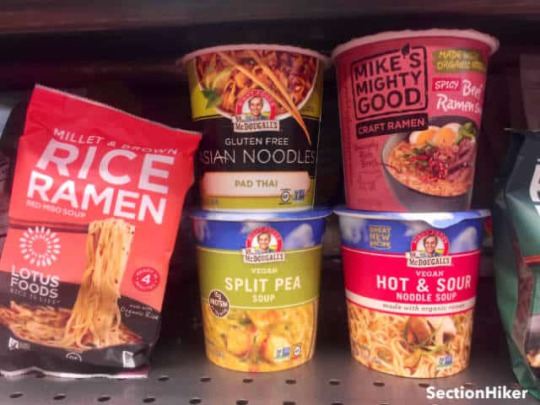
Good Cold Soak Foods
Here’s a list of foods that can be cold-soaked. I’m very health-conscious with my food choices in life and while backpacking, so I tend to stay with foods that are natural, with no preservatives or weird ingredients. That’s what works for me, yet I encourage you to choose what’s right for you.
Couscous
Rice Noodles (I prefer these over ramen, although they can get mushy)
Oatmeal
Quinoa Flakes (like oatmeal in texture)
Instant Mashed Potatoes
Ramen Noodles
Polenta Mix or Grits
Dehydrated Refried Beans
Dried Hummus
Creamy Soups (I like McDougall’s Brand, but you can also find these in the bulk section of co-ops. Split pea & black bean are loaded with protein)
Dried Falafel Mix (Doesn’t look like falafel balls, but tastes good and is like a spread)
Breakfast Powders, Protein Powders, Peanut Butter Powder, Coconut Powder
Freeze-dried Fruits and Veggies & Dehydrated (some don’t work great)
Dried Seaweed
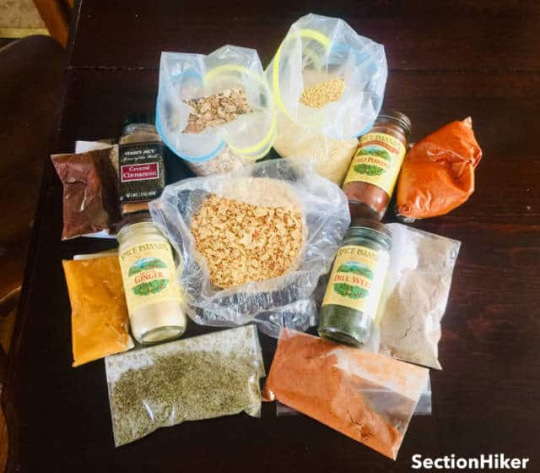
Cold-Soak Meal Recipes & Ideas
One way to make cold-soaking work, in a way that it’s a whole meal, is to combine it with other stoveless food choices. Here are some of my favorite, healthy cold-soak meal creations you can try out on a backpacking trip.
Dried oats or quinoa flakes mixed with protein powder or coconut milk powder, cinnamon, dried fruits or dehydrated fruits, dried coconut, cacao nibs, maca powder, matcha powder, hemp seeds, flax meal, chia seeds, and any other nuts/seeds you like.
Granola can be mixed with protein powder, coconut milk powder, or even water and soaked in advance to make it softer.
Couscous mixed with a packet of salmon or tuna, dried fruit, and nuts, sea salt. Near East is a good brand if you want flavored, or you can add your own seasonings like garam masala, curry, garlic for Indian; lemongrass and ginger for Thai; cumin, chipotle, chili for Mexican, etc.
Hummus, falafel mix, or refried beans mix with blue corn chips (any chips/crackers you like works) or on a tortilla. Nutritional yeast has protein and adds a cheesy flavor.
Polenta mixed with jerky is tasty.
Rice noodles mixed with dried seaweed and peanut butter powder is a go-to for me. (I like Rice Ramen by Lotus Foods which is low sodium and Mike’s Mighty Good).
Split Pea soup mix, Black Bean soup mix, Corn chowder soup mix, Curry Lentil soup mix – these are all high protein and yummy with crackers or chips for the crunch factor. I mentioned McDougall’s Soups above.
If you want to drink cold coffee, Four Sigmatic is a fantastic brand that makes single-serving packets. Pricey, but contains adaptogen herbs and mushrooms for a healthy, crash-free boost. They also make protein powders and other beverages.
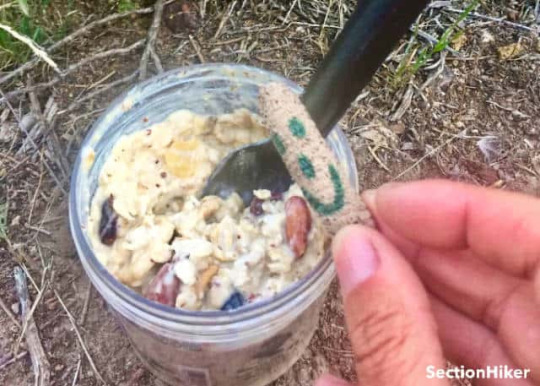
Closing Thoughts
With a bit of knowledge and a spirit of experimentation, cold-soaking no-cook backpacking meals can be a fun adventure in itself. If you become familiar with the basic process and then play around with your personal tastes and the array of options out there, it can be a practical way to either leave the stove behind OR take it with you and do both (like this crazy hiker does). Whatever you choose, do what’s right for you and what makes you feel comfortable and free to enjoy your backpacking adventures.SectionHiker is reader-supported. We only make money if you purchase a product through our affiliate links. Help us continue to test and write unsponsored and independent gear reviews, beginner FAQs, and free hiking guides.
About the author
Heather Daya Rideout has been a life-long outdoorswoman. Her pursuits and passion for hiking and camping have taken her around the world for many long-distance trips; such as backpacking in Nepal, India, South America, Morocco, Europe, and North America. Heather has hiked the Appalachian Trail, the Pacific Crest Trail, and a route of 1,500 miles combining several Camino routes through Spain and Portugal. On any given day she would rather be outdoors than anything else and her lifestyle is a direct reflection of that deep love affair with nature. Heather currently lives in Idaho and she’s having a wondrous time experiencing the beauty it offers. You can read some of her other writing at Contently.com.
2 notes
·
View notes
Text
0 notes
Text

https://www.safecastle.com/collections/mountain-essentials
Buy 8oz pouches OR one 2.25 lb cans of our delicious, shelf-stable Mountain Essentials Whole Egg Crystals, and get another ONE FREE (minimum spend applies)!
Why Mountain Essentials Egg Crystals?
Made from real, all-natural chicken eggs
Long shelf life (up to 7 years!) for emergency preparedness or pantry stocking 囤
Perfect for backpacking, camping, or whipping up quick meals at home ️
No refrigeration needed - convenience at its finest! ❄️
This offer is clucking (okay, we'll stop with the egg puns) amazing for both everyday use and emergency preparedness.
#Mountain Essentials#Egg Crystals#Emergency Prep#Camping Food#Backpacking Food#eggs#scrambled eggs#free shipping#game changer
0 notes
Text

car speech be damned give him his motorcycle back!!!!!
#its cool as hell giv e it BACK#psych#shawn spencer#shawn spencer fanart#psych fanart#psych show#psych shawn#psych usa#psych tv#the offer is tempting but u know gus is not getting on that bike.#the second helmet and food are in his backpack trust me he told me#ive gotta practice drawing motorcycles more#also he wears those boots and the jean jacket like twice in the whole show but it WILL be taking up a disproportionate amount of brain space
1K notes
·
View notes
Text

MORE amethios
#amethio#anipoke#pokemon horizons#fanart#idk i just want to see him being nice and sharing food is simple but wholesome#liko doesn have her backpack and ame usually travels light so maybe he has a hidden snack pack somewhere in that fluffy coat of his#as you can see im patiently waiting for friday :)
236 notes
·
View notes
Text










lps 2137 stimboard, with smores, red, & petre/dog related stims!
1 , 2 , 3 / 4 , 5 , 6 / 7 , 8 , 9
#sfw agere#sfw petre#red stim#smores stim#food#shoes stim#converse#backpack#flannel stim#collar stim#dog collar#worry stone#paw stim#lps#littlest pet shop#my favs <3#brown stim#stimboard#stim#stim blog#stim account#stimblr#stims#gif#stim gif#stimmy#visual stim#lps stimboard#boyre
227 notes
·
View notes
Text

Food bowling
original picture

#so i have this headcanon that Mouse Kaboom always had his backpack on whenever he could#just in case yk#and fo context here they are about to leave for a mission which is why they have their outfits on but not everything they need#and Flippy finished first and got bored so he decided to play some bowling with rotten food (he would NEVER waste edible food)#happy tree friends#htf#htf fanart#htf flippy#htf mouse kaboom#htf sneaky#my art#oh i forgot to mention I LOVE the desings they have!!! specially cuz i'm a huge fan of tick lineart#mouse kaboom looks kinda bad here..try not paying attention to him
151 notes
·
View notes
Text

I'm going to school! by sungmoomoo
150 notes
·
View notes
Text









Kin stimboard (kinboard?) #1: Steven in Steven Universe future
Someone get this man a therapist
💕 🌸 💕 / 🌸 💕 🌸 / 💕 🌸 💕

#stim#stimboard#steven universe#steven universe future#su#su future#pink#black#white#scissors#blade#sharp object#food#backpack#school#fashion#shoes#writing#fursuit paws#cookie#frosting#icing#vinyl#record#music#not request#fav#described#image id
52 notes
·
View notes
Text



BREAD
I've been making a bread series on Twitter for some time and forgot to post it here too, so, there you go! Our main characters are bread <3
Details:
Liam is Milk Bread with scrambled eggs and leaves! yum
Amelia is an English Muffin with ham and something! yyyuum
anddd Bryce is a Soda Bread with raisins yumy yumy
HEHEH I learned a lot about breads, it was amazing, also wanted to practice how to draw food, and I'm happy with the result, I want to know how to make them more delicious tho
ONE by Cheesy Hfj. (Official Playlist)
#object show community#osc#object shows#artwork#digital fanart#fanart#hfjone#cheesy hfj#jezzjul#one object show#hfjone backpack#hfjone liam#hfjone bryce#hfjone fanart#hfj one#onehfj#liam plecak#bread#food#lols
185 notes
·
View notes
Text


I found this nice Build-a-Bear wolf in the local recycle shop today and bought him for my friend! No space in my backpack this time, so he had to be carried loose on the bus hehe.
By coincidence I actually had Wolfie the Jellycat wolf with me too (hiding in my bag while I was at work!) so the two of them had a pleasant bike ride home together! Wolfie seems to bring good wolf-finding luck...
#wolf#build a bear#jellycat#backpack wolf#plushie#toys#outdoor photo#brown#grey#natural colour#food /#i like how they match that snack bar
377 notes
·
View notes
Text
Master Chef, meet Camp Chef! Your beginner's guide to delicious campfire meals
#Camping2024#OutdoorsyLife#united states#GoCamping#camping#food#backpacking meals#backpacking food#camping stove
0 notes
Text






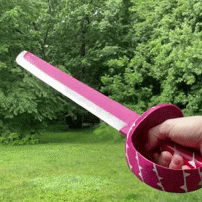

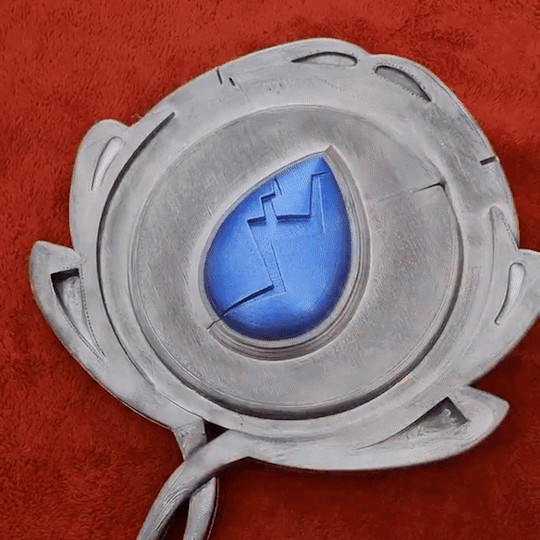
🙀✰🍔✰🧇
✨️✰🌟✰🫶🏽
🗡✰🎶✰🪞
#{Here's to the 10 Year Anniversary of Steven Universe 💛 It truly changed my life for the better}#{Maybe I should (re)do some SU character stims...}#~ 👑 Mod Morbucks 👑 ~#aesthetic#stim#stims#stim board#stimboard#mood board#moodboard#food#steven universe#steven universe anniversary#su#su anniversary#rose quartz#steven quartz universe#cookie cat#cheeseburger backpack#together breakfast#connie maheswaran#lapis lazuli#mirror gem#sword#cosplay#ukulele#connverse#su 10 years#steven universe 10 years
142 notes
·
View notes
Text

the way this has been my only crit of the game so far
#bg3#beloved gay purse dog#like. where’d you even learn how to do that#currently level five have managed to not reveal i’m a vampire to anyone#neurotically collecting food cause he doesn’t know how much people eat. karlach has 80 pounds of meat in her backpack
50 notes
·
View notes